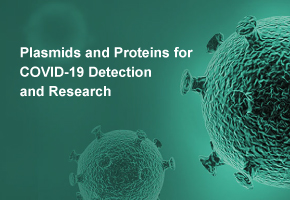Cyclic peptides: promising candidates for biopharmaceuticals
Cyclization of peptides has been shown to be an important tool for structure-activity studies and drug development. The ring structure of cyclic peptides can be formed through four strategies, as shown in figure 1, including “head-to-tail cyclization” ”head-to-side chain cyclization” “side chain-to-tail cyclization” and “side chain-to-side chain cyclization”. In GenScript, our customers can choose from various approaches for obtaining cyclic peptides.
Figure 1: Variants of peptide cyclization.
Due to the favorable pharmacological characteristics of cyclic peptides, such as low toxicity and immune response, good binding affinity, and target selectivity, cyclic peptides are attractive candidates for the development of therapeutics. In the past decades, the FDA and EMA have approved several cyclic peptide drugs (Table1) into market. Interestingly, the majority of clinically approved cyclic peptides are discovered in nature.
Table 1 cyclic peptide drugs approved in the last ten years by the FDA and/or
EMA
Antibacterial cyclic peptides
As described in table 1, several cyclic peptide antibacterial drugs have been approved by FDA, including anidula fungin (2006), telavancin (2009), dalbavancin (2014) and Oritavancin (2014). Telavancin, a semisynthetic derivative of vancomycin, is a bactericidal, lipoglycopeptide antibiotic approved for use in complicated skin and skin structure infections caused by susceptible Gram positive organisms.
Vancomycin was first separated from the soil bacterium Amycolatopsis orientalis in 1950s. It was used to treat skin infections, bloodstream infections, bone and joint infections, meningitis, and endocarditis caused by methicillin-resistant staphylococcus aureus (MRSA). Vancomycin is a glycopeptide antibiotic and contains seven amino acid residues. By inhibiting the biosynthesis of N-Ac-glucosamine (NAG) and N-Ac-muramic acid (NAM) polymers, vancomycin prevent the formation of the backbone structure of the bacterial cell wall, and also influence the function of cross-linking enzyme in bacteria.
Another important cyclic peptide antibiotic is enduracidin produced by Streptomyces fungicides. A series of studies reported that enduracidin can inhibit the activity of MurG, an important enzyme in the biosynthesis of bacterial cell wall, then inhibit the synthesis of peptidoglycan on cell wall, leading to bacterial death. Because of its high safety, low toxicity, low residue, and high activity against Gram-positive bacteria, enduracidin is widely used as a feed additive for pigs and chickens. In addition, enduracidin also has a strong inhibitory effect on hepatitis B virus (HBV) antigen, as it inhibits the synthesis of reverse transcriptase and antigen.
Daptomycin is isolated from the soil bacteria Streptomyces roseoporus. Daptomycin is used to treat life-threatening infections caused by Gram-positive bacteria, and it is regard as the last resort to defeat drug-resistant pathogens in clinic applications. Daptomycin consists of 13 amino acid residues, 10 of which compose a cyclic backbone, and the other three form an exocyclic tail together with a decanoyl lipid. Daptomycin can insert into the cell membrane, then an aggregation of daptomycin occurs in the same position. The aggregation of daptomycin alters the curvature of the membrane, which creates holes that leak ions, resulting in the rupture of the membrane and bacterial cell death.
Anticancer cyclic peptides
Peptides are being developed as
potential anticancer agents that specifically target cancer cells and are less
toxic to normal tissues. Reniochalistatins A–E are five cyclic peptides from
the marine sponge Reniochalina
stalagmitis, and the cyclic octapeptide reniochalistatin E is cytotoxic to
different tumor cell lines, such as myeloma RPMI-8226 (IC50=4.9µM) and gastric MGC-803
cells (IC50=9.7 µM).
FK228 (Romidepsin),
a potent histone deacetylases (HDACs) inhibitor, is a cyclic depsipeptide
isolated from Chromobacterium violaceum. In 2009, it was approved by FDA for
the therapy of cutaneous T‐cell lymphoma (CTCL) as a prodrug. FK228 can be
converted to its active form in vivo, by reducing the intramolecular disulfide
bond into free sulfhydryl groups. Then one functional sulfhydryl group enters
into the active‐site pocket of HDACs and binds with the zinc ion.
Gymnopeptides A and B are two highly
N-methylated cyclic peptides isolated from the mushroom G. fusipes, they have been found to suppress the growth of diverse
cancer cells, such as skin epidermoid cell line (A431), cervical cell line
(Hela), and breast cell lines (MCF7, T47D, and MDAMB‐231).
Antiviral
cyclic peptides
Many marine peptides, obtained from seaweeds, fishes, mollusk, crustaceans, crabs and marine bacteria and fungi, show various biological activities such as anti-tumor, anti-virus, anti-oxidant, immunoinflammatory effects and other pharmaceutical properties based on their structural characteristics, amino acid composition and sequences. For example, aspergillipeptide D, a cyclic pentapeptide, was produced by marine gorgonian‐derived fungus Aspergillus sp. SCSIO 41501. It exhibited antiviral activity against herpes simplex virus type 1 (HSV‐1) with IC50 = 9.5 µM as well as HSV‐1‐106 and HSV‐1‐153 at a concentration of 12.5 µM. Simplicilliumtide J was identified from the marine fungal strain Simplicillium obclavatum EIODSF 020. It exhibited significant antiviral activity toward HSV-1 with IC50 value of 14.0 µM that could be interpreted in virtue of the presence of lactone linkage and a fatty acid chain moiety, and simplicilliumtide J also showed antifungal activity against Aspergillus versicolor and Curvularia australiensis.
A growing number of bioactive cyclic peptides have been reported and
applied with antibacterial, antifungal, anticancer, antiviral, and other
biological activities. However, some cyclic peptides were discovered with no
reported biological activities. Talarolide A, was isolated from an Australian marine
tunicate-associated fungus, Talaromyces
sp. (CMB TU011). The compound did not show antimicrobial or cytotoxic
activities. Cyclic tetrapeptides auxarthrides A and B were inactive in the
antifungal bioassay and against cancer cell lines. These cyclic peptides may
have a specialized ecological purpose.
Screening methods for bioactive cyclic peptides
The cyclic peptide screening methods can be categorized into in vitro and in vivo methods, as shown in figure 2. There is no chance of interference by intracellular factors with in vitro methods. The most frequently methods are phage display, mRNA display and solid-phase peptide synthesis (SPPS). Amino acids with diverse chemical structures can be used as reaction components in SPPS, such as those that are branched, elongated and N-methylated. With the PepHTS Peptide Library Platform, GenScript offers high throughput peptide library services with economic price to help global scientists screen bioactive peptides. Additionally, in vivo methods rely on living organisms and their translation systems, for example, yeast two-hybrid system, bacterial reverse two-hybrid, protein fragment complementation assay (PCAs), split-intein circular ligation of peptides and proteins (SICLOPPS).
Insterested in learning more about cyclic peptides? Further information can be obtained from our experienced scientists in GenScript, contact us and talk about your cyclic peptides projects at peptide@genscript.com or leave your comments. Click here for more information about peptide synthesis services.
Special offer:
From now through 10/15/2020, get up to $900 reduction on your gene synthesis and peptide online orders. Click here to learn more.
Related articles
1. Peptide Conjugation: KLH, BSA and OVA
2. Fluorescent Modifications for Peptides
3. What you need to know about peptide modifications - Fatty Acid
Conjugation
References:
1. Joo, Sang Hoon. "Cyclic
peptides as therapeutic agents and biochemical tools." Biomolecules &
therapeutics 20.1 (2012): 19.
2. Jing, Xiaoshu, and Kang Jin.
"A gold mine for drug discovery: Strategies to develop cyclic peptides
into therapies." Medicinal Research Reviews 40.2 (2020): 753-810.
3. Abdalla, Muna Ali, and Lyndy J.
McGaw. "Natural cyclic peptides as an attractive modality for
therapeutics: a mini review." Molecules 23.8 (2018): 2080.
4. Li, Peng, and Peter P. Roller.
"Cyclization strategies in peptide derived drug design." Current topics
in medicinal chemistry 2.3 (2002): 325-341.
5. Zorzi, Alessandro, Kaycie Deyle,
and Christian Heinis. "Cyclic peptide therapeutics: past, present and
future." Current opinion in chemical biology 38 (2017): 24-29.
6. Zhong, Tian-Hua, et al.
"Discovery, gene modification, and optimization of fermentation of an
enduracidin-producing strain." Journal of Asian natural products research
20.7 (2018): 633-648.
7. Saravolatz, Louis D., Gary E.
Stein, and Leonard B. Johnson. "Telavancin: a novel lipoglycopeptide."
Clinical infectious diseases 49.12 (2009): 1908-1914.
8. Wang, Linghong, et al.
"Anticancer potential of bioactive peptides from animal sources."
Oncology Reports 38.2 (2017): 637-651.
9. Wang, Zhaoyang, et al.
"Anti-HSV-1 activity of Aspergillipeptide D, a cyclic pentapepetide
isolated from fungus Aspergillus sp. SCSIO 41501." Virology journal 17.1
(2020): 1-9.
10. Youssef, Fadia S., et al. "A
comprehensive review of bioactive peptides from marine fungi and their
biological significance." Marine drugs 17.10 (2019): 559.
- Like (1)
- Reply
-
Share
About Us · User Accounts and Benefits · Privacy Policy · Management Center · FAQs
© 2025 MolecularCloud



